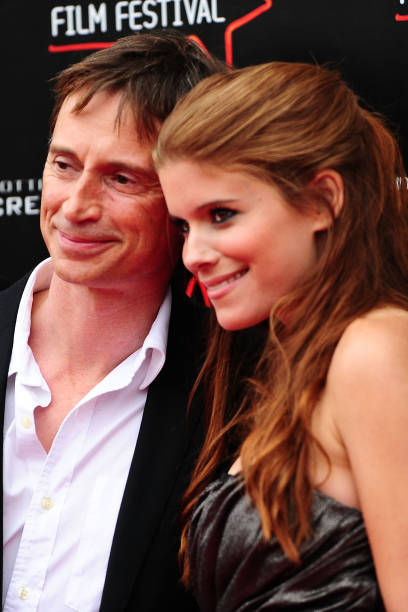#mara carlyle
Text


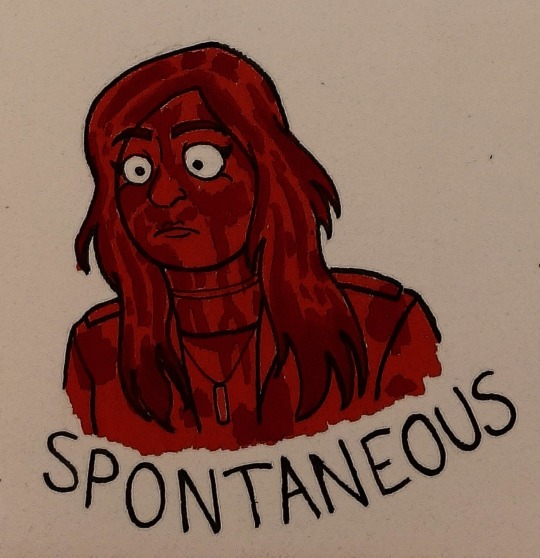


horror stuff I've enjoyed recently
#horror#final destination#doctor sleep#spontaneous#spontaneous movie#the haunting of hill house#would you rather#would you rather movie#alex browning#kimberly corman#wendy christensen#nick o'bannon#sam lawton#dan torrance#abra stone#mara carlyle#nellie crain#nellie vance#iris would you rather#traditional art#ink drawings#art#fencedraws#blood#injury#body horror#ask to tag
81 notes
·
View notes
Photo

🡒 ✨ 𝐀𝐧𝐧𝐚 & 𝐆𝐞𝐧𝐧𝐲 • 𝘒𝘢𝘵𝘩𝘦𝘳𝘪𝘯𝘦 𝘓𝘢𝘯𝘨𝘧𝘰𝘳𝘥 & 𝘎𝘢𝘷𝘪𝘯 𝘓𝘦𝘢𝘵𝘩𝘦𝘳𝘸𝘰𝘰𝘥
#katherine langford#anna#gavin leatherwood#gennaro#mara carlyle#jason#spontaneous#wicked enigma#crossover#au#rp#rpg#annaxgennaro#gennaroxanna#couple#fan fic#(character)#(couple)#(collage)#(rp)#(crossover)#(au)#oc#(oc)#fake body
5 notes
·
View notes
Text
she was a sun dress of a person….
5 notes
·
View notes
Text
Tag People You Want to Get to Know Better
I was tagged by the incredible @barbecutie--Thank you, bb! <3333
Last Song: I've been obsessed with Placeholder for the Night by R. Missing. It's hitting all the right Valerie vibes lately
Currently Watching: Shogun and Tokyo Vice are my current viewings; just finished my Lost rewatch and I'm delighted to report it left me as broken now as it did in 2010!!!!!
Three Ships: Goro Takemura x Valerie Powell, Dr Harry Carlyle x Sara Ryder, Fem!Hawke x Everyone lmao
Favorite Color: It's less about individual color and more about some sweet, sweet color combos. Right now I'm really into blue and orange.
Currently Consuming: Hibiscus tea and cheesy puffs lmao
Actually, I'm gonna bitch for a minute: Husbando and I decided to try a new place for delivery and it was awful and over-priced and I'm still really hungry but we ordered too late to have other options soooooo yeah. Cheesy puffs it is, lmao.
First Ship: First ship that I knew I was actively shipping was probably Mara Jade and Luke Skywalker; they were the first I wrote fic for. But I think the first romantic relationship I was really invested in was Eliza and Goliath from Gargoyles.
Place of Birth: southern california, usa <- Same, actually!
Current Location: My living room :3
Relationship Status: Married
Last Movie: jhgjdfd I just needed some background noise while I was cleaning so I put on the Lifetime movie for Sherri Papini kidnapping hoax--It was as bad as expected.
Currently Working On: Going through my mentions and catching up tag games!
And I tag @vorchagirl, @roofgeese, @commander-krios, @miss--river, @shadesofchaoticenergy, and @medtech-mara with no pressure of course! <33
10 notes
·
View notes
Text
"Stone of Destiny" set to cause a stir

Press and Journal: October 4, 2008
Some say it was the greatest robbery in Scotland's History, others that it bolstered calls for independence. Now cinema audiences have the opportunity to decide for themselves as Stone of Destiny opens next week.
The true story of Scotland’s most daring robbery hits cinema screens on October 10, when Charles Martin Smith’s latest feature, Stone of Destiny, is released.
The all-star cast includes Charlie Cox (Casanova, Stardust) and Kate Mara (Shooter, Brokeback Mountain) alongside Scottish screen legends Billy Boyd (The Lord of the Rings, Master and Commander) and Robert Carlyle (Trainspotting, The Full Monty) as well as Peter Mullan (My Name is Joe, Children of Men) and Academy Award winner Brenda Fricker (My Left Foot).
Written and directed by Charles Martin Smith, Stone of Destiny is based on the real-life story of Ian Hamilton, played by Charlie Cox, who led a group of four university students to steal back the legendary coronation stone of Scottish kings and queens and symbol of Scottish independence – the Stone of Scone.
Frustrated by political apathy and Scotland’s diminishing sense of nationhood, Hamilton sought to reawaken Scottish national pride and spur his generation into action.
For hundreds of years, the English had jealously guarded the Scottish coronation stone, the Stone of Destiny – an ancient block of sandstone symbolically used in coronation ceremonies which Edward I took from Perth in the 13th century.
Hamilton led a group of university friends to London to make a dramatic gesture to reinstate Scotland’s place on the political map. Despite having little money and even less experience, they hatched an ambitious plan to break into Westminster Abbey in the wee hours of Christmas morning and “liberate” the most powerful symbol of Scotland’s nationhood, the Stone of Scone – otherwise known as the Stone of Destiny.
Hamilton’s daring act was a moment of great Scottish pride.
Based on Ian Hamilton’s book, The Taking of The Stone of Destiny, the movie was filmed in Glasgow and London and, fittingly, had its world premiere at the Edinburgh International Film Festival in June this year.
Among those attending the premiere were Sir Sean Connery, Nairn-based Oscar-winning actress Tilda Swinton and the entire cast.
While Charlie Cox burst into public consciousness in 2007 with his lead role in Matthew Vaughn’s Stardust, the 25-year-old London-born actor was no beginner.
After making his big-screen debut in 2003 thriller Dot The I, he went on to work opposite Al Pacino in Michael Radford’s lush film version of The Merchant of Venice and Heath Ledger in another film set in the Italian city, 2005’s Casanova. Subsequently acting alongside Robert De Niro and Michelle Pfeiffer in Stardust, Cox evidently has no fear of challenging himself to the limits.
However, accepting the role of Hamilton threw up two challenges – perfecting a Scottish accent and coming up against Scottish acting giant Robert Carlyle, who plays Hamilton’s reluctant mentor, John MacCormick.
Speaking of Carlyle, Cox said: “He’s one of my favourite actors; in many ways, more so than some of the big guys because he’s more my generation.
“I’ve grown up watching his films and he’s a jobbing actor who does great role after great role.”
And mastering the accent?
“Absolutely terrified – and still am. There’s no real excuse for it, is there? It’s my job to get it right, and I’m not great with accents. I’m not one of those people that can turn it on. I had to really work hard with it. And I know that I’ll watch the film and hear sounds that are off and wrong, and I just hope that doesn’t take away from the performance, and I hope it’s not too obvious to others.”
Having spent months filming a story he initially knew nothing about, it’s interesting to hear his views on the completed film.
“I loved it. I thought it was incredibly charming,” said Cox. “I felt like I did when I read the script. I thought it was a wonderful story and told brilliantly. And I really feel like Charlie Martin Smith has translated that very well on to film.”
Playing a person who is still alive makes the role that wee bit harder, too.
“It’s a bit mad, isn’t it?” said Cox. “It’s a wee bit more pressure. I feel, with the other characters that I’ve played, anything extra that I bring to it is justifiable because it’s my own invention. Whereas that’s not the case here.
“You’re playing someone who does exist, who was documented, and although what I know of Ian is what he is today, and the bits of information I have from the 1950s and the rest of his life, I don’t have any video footage of him. So I had to make my own mind up, which is more freeing.
“But it’s a pressure. If I don’t do him justice, if I get him wrong, it’s not OK. His son was on the set, who, ironically, is a friend of mine. Ian (Hamilton) has seen it, but not on the big screen, and that makes a big difference.
“If you don’t know much about film, if you haven’t worked a lot with film, you can watch it on a small screen and think that you’ve seen it. But then it’s a different experience.”
Like Mel Gibson’s Braveheart, Stone of Destiny is tipped to stir Scottish blood.
“I read something in the paper the other day. The biggest boost of national pride in Scotland over the last 50 years was the release of Braveheart,” said Cox. “They had more rallies and letters when Braveheart was released than over anything else.”
Although he knew nothing of the story beforehand, having learned it, Cox feels it contributed to the movement for Scottish independence.
“Although it didn’t have a direct impact into the Scottish government, it was certainly a huge catalyst towards all of that,” said Cox. “Ironically, and a lot of this is by chance, filming it now is interesting because the nationalist party are in power. Not only was that not the case back then, it was far from it. It was not even feasible.”
~*~
#just me archiving another old interview 😊#charlie cox#ian hamilton#stone of destiny 2008#interview#article#baby charlie
14 notes
·
View notes
Text

this here is a fandom based starter call for my muses in...
marvel
little women
mtv scream
sex education
video games
skins uk
spontaneous
i'll list them under the cut and all i ask is you let me know who you'd like a starter from.
karolina dean
nico minoru
esme frost
lauren strucker
♥♥♥♥♥♥
meg march
♥♥♥♥♥♥
emma duval
♥♥♥♥♥♥
maeve wiley
♥♥♥♥♥♥
kate denson (dead by daylight)
chloe (detroit: become human)
rachel amber (life is strange)
♥♥♥♥♥♥
emily fitch
♥♥♥♥♥♥
mara carlyle
#indie marvel rp#the gifted rp#runaways rp#marvel rp#marvel indie#life is strange rp#little women rp#historical rp#indie historical rp#dead by daylight rp#detroit become human rp#indie dbd rp#indie dbh rp#indie lis rp#skins rp#indie skins rp#sex education rp#indie sex education rp#&ooc#&startercall#indie oc rp#indie rp#indie human rp#spontaneous rp
3 notes
·
View notes
Link
Check out this listing I just added to my Poshmark closet: AAron Starmer Spontaneous
1 note
·
View note
Text
Rules Free Radio Nov 7 2023

Tuesdays 2pm - 5pm EST Rules Free Radio With Steve Caplan
bombshellradio.com
On this week's Rules Free Radio with Steve Caplan, we'll check out new releases including re-releases and new albums with older music. Cat Power just released an album recreating Bob Dylan’s 1966 concert in England. There’s a 50th-anniversary release of Bob Marley and The Wailers Catch a Fire album with remasters and new songs added. Another reggae band, Creation Rebel released a new album in October, Bas Jan, Art Feynman, Squirrel Flower, Kacey Johansing, Field Medic, Beirut, and Mon Laferte all have new releases, as well as Washington DC’s Scream, Third Coast Percussion, and Leonardo Barbadoro. We’ll hear classics from Sinead O’Connor, The Who, The Screaming Jets, Buddy Montgomery, Jean Luc-Ponty, The Chocolate Watchband, Woody Herman, The Sundays, Mazzy Star, k.d.lang, Augustus Pablo, and some exotica classics by Doris Day, and Pink Martini, plus a bunch of others.
The Chocolate Watchband - Trouble Everyday
Scream - Politics Is Entertainment
Sunscreem - Broken English
She Drew The Gun - Class War (How Much)
The Screaming Jets - Eve Of Destruction
The Who - Behind Blue Eyes
Cat Power - It's All Over Now, Baby Blue
Luka Bloom - Natural Mystic
Bob Marley and the Wailers - No More Trouble
Creation Rebel - Under Pressure
Sinead O'Connor - War
Augustus Pablo - Skanking with Pablo
The Mighty Mighty Bosstones - Rudie Can't Fail
Ziggy Marley & The Melody Makers - Conscious Party
Art Feynman - Early Signs of Rhythm
Chicks On Speed - Warm Leatherette
Bas Jan - At The Counter
Jean-Luc Ponty - The Art Of Happiness
The Woody Herman Band - Green Earrings
Buddy Montgomery All-Star Group - The Night Has A Thousand Eyes
Third Coast Percussion - Triple Point
Leonardo Barbadoro - Vibi
Max De Mara & The Elysian Quartet & Mara Carlyle - Art Thou Troubled
k.d. lang - Wash Me Clean
Emerson Parris - Matte Kudasai
Birdsong At Morning - Those Beautiful Words
Tchello Palma - I Don’t Wanna Talk About It
Squirrel Flower - Finally Rain
Mazzy Star - Flowers in December
Cat Power - Desolation Row
Kacey Johansing - Valley Green
Field Medic - You Deserve Attention
The Sundays - Love
Beirut - So Many Plans
Mon Laferte - Pornocracia
Doris Day - Perhaps Perhaps Perhaps
Pink Martini - Sway
Cesaria Evora - Cize
Read the full article
0 notes
Text
Week 2 SDL: Can I take a photo of the Marae?
In this context, 'the gaze' means to me that only until recently, māori were accepted into coming behind the cameras and showing their worlds through the lens instead of being the subjects of other photographers' work all the time. They could finally start to tell their own story.
Portrait photography plays a very heavy role in Māori culture as it relates back to ancestral carvings that have been preserved for many generations. Portraits of deceased whanau and community members were used in ceremonies to show respect.
In the 19th century, another way Māori used portrait photography was through having pictures taken of their whanau and seeing them as much more than just keepsakes and thought of the photographs of loved ones held mauri (a life force) once the person was deceased.
Maraes are seen as a sacred space to the living and a memorial for the deceased. Maraes are much more than a meeting house - they are a place for the community to foster their identities, values, and pride within themselves and their culture.
The line ‘a loaded and contestable set of issues connected to the act
of photographing in and around marae’ means that for each marae, the protocol behind photographing their sacred space is different. Each maraes protocols are decided under tikanga (marae protocol) and kawa (customs of the marae). The act of photography has consequences that are both cultural and spiritual so following this protocol is vital as a visitor/photographer.
Photographs carry mauri through the personality of the picture and who has been photographed. Once the person passes away mauri and their essence is held within the image. Mana means power and authority. It is an important concept in Maori culture because those who hold high mana are often chiefs and leaders of tribes. Through their actions, mana increases and decreases so being a good and strong role model is vital for mana to stay strong within a person.
The three thresholds are conceptual, physical, and spiritual. A photographer can transgress thresholds by not following the marae protocol behind photography and behind their general Tikanga. There are specific places for eating vs not eating, placing shoes vs removing shoes in a marae just like there are zones for photography. It is important to read the social cues and read the room so you can avoid transgressing thresholds so you don't breach tikanga.
Tapu and Noa are opposites of each other. Tapu is everything considered sacred and noa is everything common. In relation to photography, it would be important to ask what you can and cannot do to respect the tapu of the marae and its environment. Breaking of tapu can affect the mana of a meetinghouse. And the breaking of tapu can also affect the person or person beyond the marae.
Representation matters within the subject of photography because everyone deserves to show their story. In Te Ao Māori, issues of representation are often debated amongst decision makers and at the core of these debates is the responsibility to protect the mauri of the marae from potential spiritual and moral harm. Representation is shown through ancestral carvings which are considered living and sacred, and a photograph of a carving or a face is equivalently sacred.
Some pakeha photographers that are well known for their relationship with Te Ao Maori include Gil Hanly, Fiona Clark, Terry O'Connor , Sally Symes and Jill Carlyle. Their work was important to the Māori community because they photographed social and political events from the Māori perspective and they worked with the māori as a team rather than an opposition. Most of these photographers also undertook projects with blessings from the tribes and created series that are now considered historical. In 2003, John Miller received the Media Peace Prize Lifetime Award. He is from Ngapuhi descent and is a documentary photographer - specifically photographs protests and rallys that occurred around NZ.


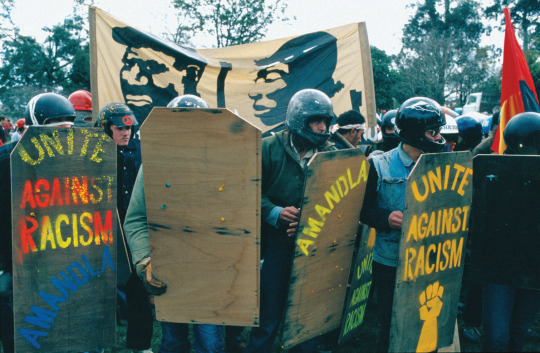
Barry Barclay was talking about the importance and meaning of taonga in the Māori culture when he was working with New Zealand Film Archive to establish the Taonga Maori Deposit
Agreement. Barry Barclay ensured a Maori perspective was represented in the legal documents structuring copyright, ownership, and accessibility. He wanted people to understand that Māori taonga was taken much more seriously than the translation of treasures. It meant that their taonga held tapu and that the tapu was extremely strong in power and strength. Mana Tuturu means enduring mana or it could be translated as 'Māori spiritual guardianship'. Mana Tuturu can be used in our photography by asking people for their consent to be featured in photos and giving credit to other photographers where credit is due. Kanohi ki kanohi means face to face. Photographs are regarded as taonga and giving the photographs back to the marae and to the people of the marae would be respected as they upheld the principle of kanohi ki kanohi.
0 notes
Text
Can I take a photo of the Marae?
What is meant by the term 'the gaze' in this context?
This is meaning the way Maori people are being misrepresented through unfair and unjust photography. 'The gaze' represents the gaze people have on Maori people for photographs being distributed without context and without permission.
2. Discuss the role of portrait photography in a Maori context. What role does the portrait play?
I don't understand this.
3. Provide an example (outside of the text) of how portrait photography of Māori was used in the nineteenth century.
I don't understand this
4. What importance does a marae have to Māori people? Discuss why photographs of a marae might be restricted.
There are sacred places in Marae. If a marae has photo access it will generally be for the mundane places in the Marae. Restricted places are sacred in the Marae and are off limits to stop them from becoming mundane.
5. What is meant by ‘a loaded and contestable set of issues connected to the act of photographing in and around marae’
The issues can stem from many things. This includes misrepresentation, unknown distribution of the photographs and the fact that photographing sacred places can make those places mundane and common.
6. What is meant by mauri? Discuss how a photography can carry mauri.
Mauri is the life spark and essence carried by all living things and has been passed down through ancestors. It is also and essence of emotion. A photograph can carry Mauri as everyones face is an accumulation of their ancestors passed down through generations.
7. What is mana and why is it an important concept?
Mana can mean spiritual power, respect and autonomy. It is important as a concept as it can be inherited as well as acquired or lost through ones own actions.
8. What are the different kinds of threshold spaces? How might a photographer transgress these spaces?
The threshold spaces of the Marae would include the Sacred and Mundane spaces in the Marae. If given permission to photograph as photographer will want to stay in their bounds of what is appropriate for them to photograph leave the sacred spaces for only their eyes and to see.
9. What are the concepts of tapu and noa? How are they relevant to photography in this context?
Tapu means sacred and Noa means commonplace or profane. Noa may have photograph access as those places are not considered sacred in the marae. There is no risk of a commonplace turning mundane and common as that is what it already is. Sacred places are not to be photographed by the public as they can be distributed unknowingly and it can take away from it being sacred. Tapu must be protected.
10. Why do issues of representation matter in the context of Te Ao Māori?
Representation maters especially when there has been a large history of misrepresentation in a particular culture or demographic.
11. Who are the Pakeha photographers who developed relationships with Te Ao Maori and why is their work important?
Gil Hanly, Fiona Clark, Terry O'Connor , Sally Symes and Jill Carlyle. Their work was important as they made their work through personal interest, historical record and/or editorial purposes. They continued to have long term engagement in Maori culture
12. Who is the Maori documentary photographer who won the Media Peace Prize? Look up and provide an example of his work, outside of this text
John Miller.

13. What does Barry Barclay mean by taonga?
Barry Barclay was one of many Maori people to write, produce and direct films told from the Maori perspective. Its storytelling being a massive part of the culture and history of Maori.
14. What does the Mana Tuturu principle mean and how can it be applied to photography today?
It is intellectual property and how taking that for personal gain can affect the people who own that intellectual property. I believe we can apply the same principle to photography today as we shouldn't try photograph cultural sacred places or items for personal gain.
15. Unpack and answer the questions Can I take a photo of the marae using the AUT Marae Nga Wai o Horotiu as the example?
Ngā Wai o Horotiu marae is AUTs Marae and is there to welcome all diverse culture in the students and staff. By unpacking the question: Can (giving respect by requesting permission) I (I am a student of AUT) Take (taking an image for personal use of celebrating the culture I have seen and been around my entire life) a Photo (Presumably for school, meaning me, my teacher and my classmates will likely see this photo) of the Marae (to take a photo wherever is appropriate for me to take one. I wouldn't take a photo of a sacred place as I am not Maori nor wish to take the taonga from those who are). At the of the day I don't believe I am the right person to make the judgment on whether it would be appropriate or not for me to take photos in a Marae.
16. What does the term ‘kanohi ki kanohi’ mean and why is it important?
This means face to face communication. It is important as it is natural human behaviour. It allows a person to see who or what they are communicating with as well as feel and hear the relationship.
0 notes
Text
Can I take a photo of the marae?
Natalie Robertson's
Can I take a photo of the marae? Dynamics of Photography in Te Ao Maori.
What is meant by the term ‘the gaze’ in this context?
The gaze is controlling the camera, and what you see using the camera
Discuss the role of portrait photography in a Maori context. What role does the portrait play?
Portrait photography was used to capture the deceased, in accordance with ancestral carvings
Provide an example (outside of the text) of how portrait photography of Māori was used in the nineteenth century.
Portraits of Maori were taken highlight their culture, e.g clothing
What importance does a marae have to Māori people? Discuss why photographs of a marae might be restricted.
A marae is an ancient sacred space that provides a ceremonial meeting place. Photography takes on a potency that can have both cultural and spiritual ramifications
What is meant by ‘a loaded and contestable set of issues connected to the act of photographing in and around marae’?
Negotiation for photography. There are no set protocols regarding photography, each marae has their own set of protocols or rules
What is meant by mauri? Discuss how a photography can carry mauri.
Life force, mauri is like a reputation in a sense, a photograph carries the reputation/ life of the subject, in this case the marae
What is mana and why is it an important concept?
Mana us a term that refers to the spiritual and inherited force of a place, person, or thing closely linked with tapu which is sacred or restricted
What are the different kinds of threshold spaces? How might a photographer transgress these spaces?
Conceptual, spiritual, and physical. If you don’t have an understanding of the cultural and spiritual realm of the marae
What are the concepts of tapu and noa? How are they relevant to photography in this context?
Tapu (sacred) noa (commonplace or profane) A portrait is sacred as living people are considered the wellspring of their ancestors
Why do issues of representation matter in the context of Te Ao Māori?
Te Ao Maori is understood as the social-cultural and spiritual world of Maori people
Who are the Pakeha photographers who developed relationships with Te Ao Maori and why is their work important?
Marti Friedlander, Gil Hanly, Fiona Clark, Terry O’connor, Sally Symes and Jill Carlyle
Who is the Maori documentary photographer who won the Media Peace Prize? Look up and provide an example of his work, outside of this text.
John Miller
What does Barry Barclay mean by taonga?
Something treasured / held dearly
What does the Mana Tuturu principle mean and how can it be applied to photography today?
Copyright and intellectual property, acknowledging spiritual relations
Unpack and answer the questions Can I take a photo of the marae using the AUT Marae Nga Wai o Horotiu as the example.
If you wish to photograph a marae, you must talk to the elders at the marae, learn about the mana of the marae and develop an understanding while being respectful
What does the term ‘kanohi ki kanohi’ mean and why is it important?
Face to Face, A photographer who returns to marae and shows their photographs upholds this principle, creates a connection between photographer and the community
0 notes
Photo




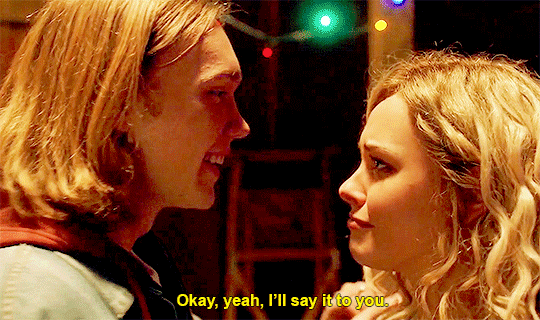
spontaneous (2020, dir. brian duffield)
#spontaneous#katherine langford#charlie plummer#mara carlyle#dylan hovemeyer#*#ok last one. and yes the text is not aligned. im over it
276 notes
·
View notes
Text
everyone go watch spontaneous rn
this is your sign
i watched it on an airplane with low expectations and then i cried and laughed so much and probably concerned the people around me
its like my new fav
18 notes
·
View notes
Text






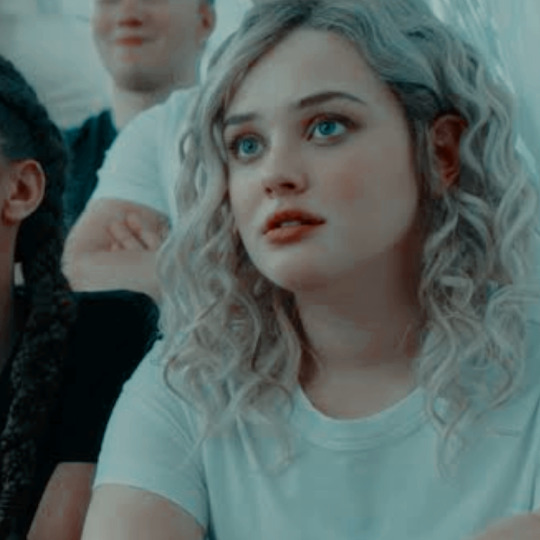


𓄹͓ ˖࣪˚𝕄𝐀𝐑𝐀 𝐂𝐀𝐑𝐋𝐘𝐋𝐄 𝐈𝐂𝐎𝐍𝐒 ִֶָ ❜
•𝐩𝐬𝐝 𝐮𝐬𝐞𝐝 𝐢𝐬 𝐟𝐫𝐞𝐞𝐝𝐨𝐦
•𝐥𝐢𝐤𝐞/𝐫𝐭 𝐢𝐟 𝐲𝐨𝐮 𝐬𝐚𝐯𝐞 𝐢𝐭
•𝐝𝐨𝐧'𝐭 𝐜𝐥𝐚𝐢𝐦 𝐚𝐬 𝐲𝐨𝐮𝐫 𝐨𝐰𝐧
•𝐜𝐫𝐞𝐝𝐢𝐭𝐬 𝐧𝐨𝐭 𝐧𝐞𝐞𝐝𝐞𝐝
#icons#movie icons#movies#spontaneous#spontaneous icons#spontaneous movie#spontaneous movie icons#mara carlyle#mara carlyle icons#icons mara carlyle#katherine langford#katherine langford icons#icons katherine langford#katherine langford icon#icons with psd#icons for twitter
52 notes
·
View notes
